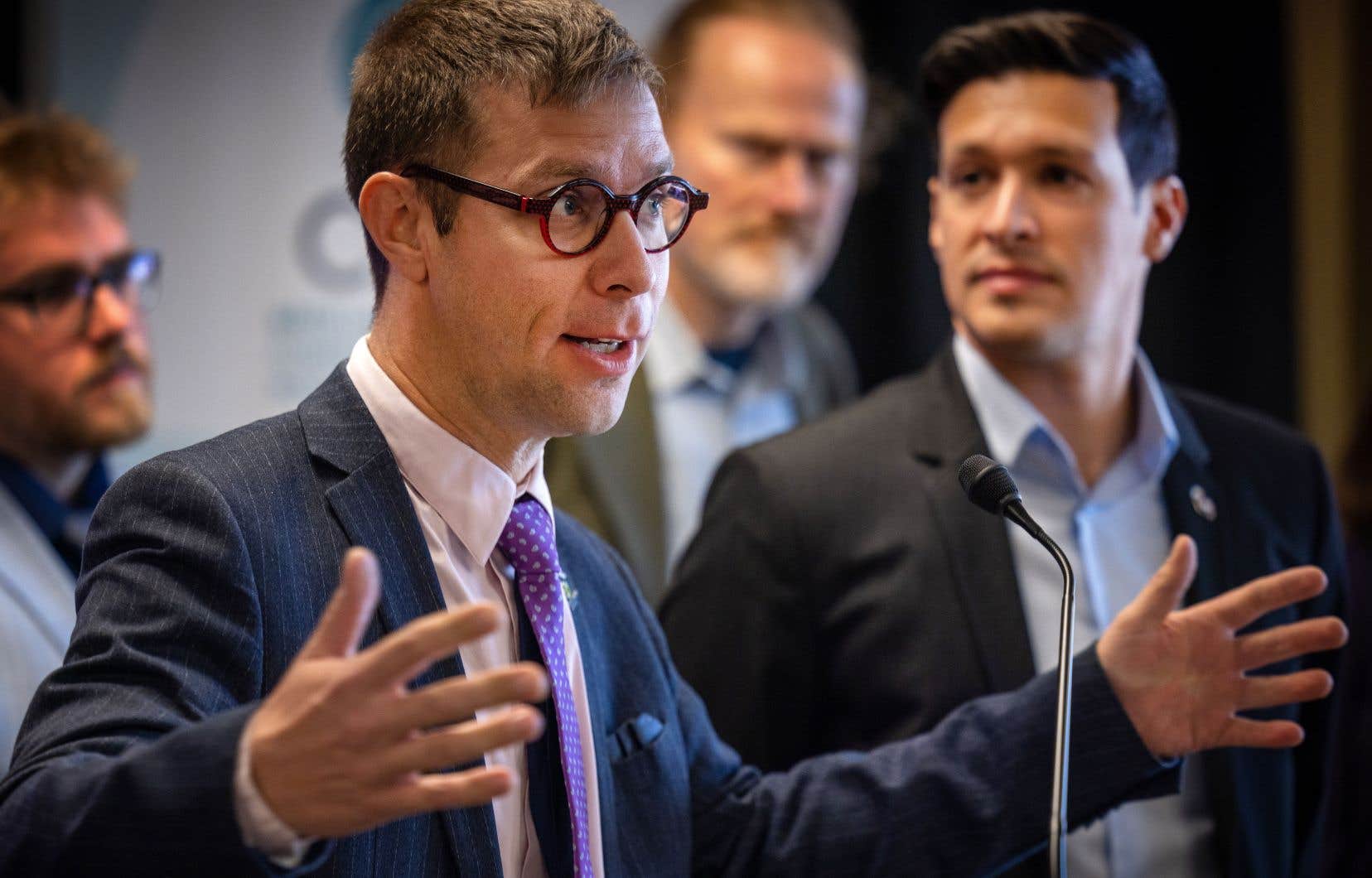Mayors of the metropolitan region are urging Quebec to carry out the Eastern Structuring Project — former Eastern REM — by including extensions to their municipalities. The route they want to see retained by the Regional Metropolitan Transport Authority (ARTM) would allow trains to go to Mascouche, to the north, and to Repentigny, to the east.
Gathered at Laval City Hall on Monday, the Mayor of Laval, Stéphane Boyer, and his colleagues from Terrebonne, Repentigny, Mascouche and Montreal-East let it be known that they had reached a consensus and that they favored a drawn in the shape of a horseshoe, between Mascouche and Repentigny, and which would cross their towns. This scenario was not one of the four extension options examined by the ARTM when it filed its preliminary report on the light rail project last January.
A large territory to develop
This scenario was evoked by the ARTM thereafter, underlined Mr. Boyer. According to the Laval elected official, the advantages of this route are numerous. It would allow a much better connection between his city and those of Terrebonne and Mascouche in addition to promoting the development of eastern Laval, he explained. “This is the last large territory dedicated to development in Laval that has not yet been developed. In our opinion, there is a golden opportunity to create a neighborhood focused on sustainable mobility and sustainable development. »
The current low density should not be seen as a disadvantage for a structuring transportation project, he believes. “There are many countries in Europe that put a metro station in a field and build the neighborhood around it,” explained Mayor Boyer.
However, he made a point of specifying that the sector to be developed was not located within the perimeter of the permanent agricultural zone which is located north of avenue Marcel-Villeneuve.
Terrebonne Mayor Mathieu Traversy believes that a light rail as proposed would reduce congestion on Highway 25 and be more efficient than the Mascouche train, which he described as “dying.” “We have a population that despairs of having a structuring network to be able to use an alternative to the car. We have nearly 200,000 people in the MRC des Moulins who are looking for solutions to solo driving,” he said.
Mayor of Repentigny, Nicolas Dufour recalled that only 6% of the population of his city used public transport. “And it’s not even their fault,” he said, referring to the lack of effective options.
Mayors in a hurry
Passing through Montreal last week, the Minister of Transport and Sustainable Mobility, Geneviève Guilbault, had indicated that she expected to receive the final version of the structuring project for the East by the end of her mandate, in 2026. But for Mayor Dufour, the pace should be accelerated. “Our populations cannot wait until 2026 or 2029. There will be an election in 2026 in Quebec. Who knows what will happen? he wondered.
For her part, the mayor of Montreal East, Anne St-Laurent, would like her city to be able to obtain a station on its territory, which was not the case with the former REM de l’Est project. It maintains that Montreal East has 23 million square feet (2.1 square kilometers) in an industrial park to be developed. “It’s a unique potential in Quebec, I would even say in Canada. We absolutely need this station,” she said. “It will become a major employment center for the east end of Montreal. »
According to Guillaume Tremblay, mayor of Mascouche, eight out of ten vehicles on its territory are occupied by people who work in Laval or Montreal. A direct link to Laval and Montreal would be a “great opportunity” for these workers, he believes.
The ARTM confirmed that the route favored by the mayors of the crown was under study, but declined to comment further. The working group responsible for steering the structuring project in the East is continuing its work and will submit its report and recommendations in June, recalled Simon Charbonneau, director of communications for the ARTM.
